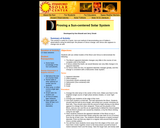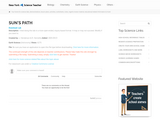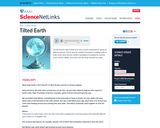
This interactive helps students practice ordering the planets.
- Subject:
- Earth Science
- Science
- Material Type:
- Interactive
- Provider:
- University of Nebraska
- Author:
- Dr.Kevin Lee
- Date Added:
- 02/26/2019

This interactive helps students practice ordering the planets.

In this lesson, students use orbital models of the Moon and Venus to demonstrate: the moon's apparent diameter changes very little in the course of one complete orbit of the Earth; how if Venus orbited the Earth, there would be little change in its apparent diameter; and how the diameter of Venus's orbit changes greatly as it orbits the Sun.

Students first explore the geometric nature of ellipses, and the circle as a special case. These newly developed mathematical skills are then used to plot an accurate model of the outer Solar System, which contains the size, eccentricity, and orientation in space of the orbits for different classes of objects. Students are then able to understand how orbits can be used to help categorize objects in the Solar System.

This interactive helps students understand the relative scale of the universe.

This resource is an activity that will help students answer the question, "What keeps our Solar System in Shape?"

This article discusses how NASA space satellites were used to determine why the Earth wobbles.

Students explain the apparent motion of the sun through the sky on an average day and how this relates to seasonal differences in length of daylight.

This video explains the Sun's analemma - the "figure 8" pattern that would result if we could take a picture of the sky at the same time every day for an entire year.

Students will first use CoSpace to create a virtual model of Newton's. Students will learn how to use CoSpace to create 3D virtual models. Next students will review concepts of rotation, revolution, seasons, tides, barycenter, precession, nutation by further exploring CoSpaces. Students will learn to write code to enable the earth to rotate and then revolve around the sun.

Students make comparisons of the rotation rates of 3 planets and the Sun.

In this Science Update, learn how the earth got tilted on its axis. Audio and transcript versions are available. Supplemental resources, including a background essay and discussion questions, are also provided.